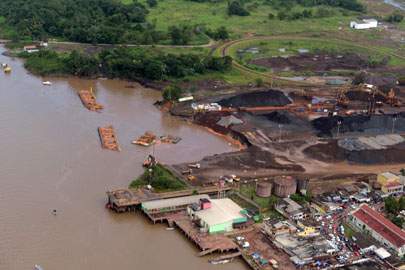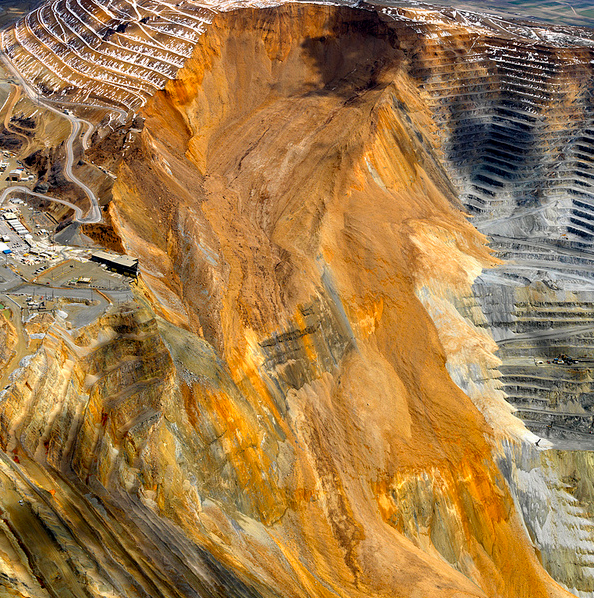26 September 2013
The costs to the mining industry of landslides – examples from Brazil and the USA
Posted by Dave Petley
One of the most significant effects of landslides is the impact that large events can have on the mining industry. Earlier this year we saw a very good example of that, when the massive slip at the Bingham Canyon mine in Utah in the USA (see posts here, here and here) led to a short-term shut down, and a long-term reduction, in production, at huge expense to the owners in clean-up costs and lost production. A report earlier this month suggested that they had removed 6 million tons to date – that’s impressive, but bear in mind the landslide was estimated to have a mass of 165 million tons, so there is only 159 million tons to go! The implications of this event went far beyond the mine itself, and its employees. For example, Salt Lake County saw a decline in its sales tax revenues after the landslide, attributed at least in part to the reduction in activity in the mine.
..
The clean up there continues, although not without some hiccups along the way. We won’t know the true costs of this event for a long while, but it will be extraordinarily expensive, even by the standards of the mining industry.
Today, another story has emerged about a mining company taking a huge hit from a landslide. Earlier this year, in March , I posted a couple of pieces (here and here) about a large riverbank collapse landslide at Santana in Amapa, Brazil. This event destroyed the loading facilities for an iron ore mine, and killed six people:

http://www.portalamazonia.com.br/editoria/cidades/ma-estrutura-do-pier-da-anglo-american-causou-acidente-no-amapa/
..
The timing of the landslide was somewhat inconvenient as the owners of the mine, Anglo American, had agreed in January to sell its majority (70%) stake in the mine company (Amapa). Of course, the loss of the loading facilities, the fines imposed by the government, and the negative publicity led the parties to revisit the deal. Yesterday, a revised deal was announced in which the landslide was specifically named as a factor. Anglo American ended up buying out the other 30% of Amapa, and then selling on the entire company. The article does not say how much they lost in the process, but in this industry the numbers are large. The article suggests that Amapa was valued at $1.5 billion in 2011, whilst the sale is valued at “just” $270 million. This loss cannot be solely blamed on the landslide – the price of iron ore has weakened since then for example – but it will have been a significant factor.
Land instabilty is inevitably associated with activities in the mining industry. However, as is so often the case, the costs of preventing landslides often far outweighs the costs of a large event, as these examples demonstrate.



 Dave Petley is the Vice-Chancellor of the University of Hull in the United Kingdom. His blog provides commentary and analysis of landslide events occurring worldwide, including the landslides themselves, latest research, and conferences and meetings.
Dave Petley is the Vice-Chancellor of the University of Hull in the United Kingdom. His blog provides commentary and analysis of landslide events occurring worldwide, including the landslides themselves, latest research, and conferences and meetings.
What would the author suggest as methods to prevent landslides, irregardless of cost? Can he provide examples of specific locations where these have been implemented? To what degree is climate change expected to play a role in landslides at mine sites in the future?
My understanding is that Kennecott expected the landslide at Bingham and was monitoring the slopes. Although some equipment was buried, there was no loss of life. Other than monitoring, what more could they have done?
[Bingham Canyon was a major success in that the instability was anticipated and the mine was evacuated. This was a success (although it would be interesting to know if better site investigation might have meant that the instability could have been avoided – I have not seen an indication either way on this. There are plenty of examples on this site in which slope management at mines has been less successful, often with disastrous consequences. D.]